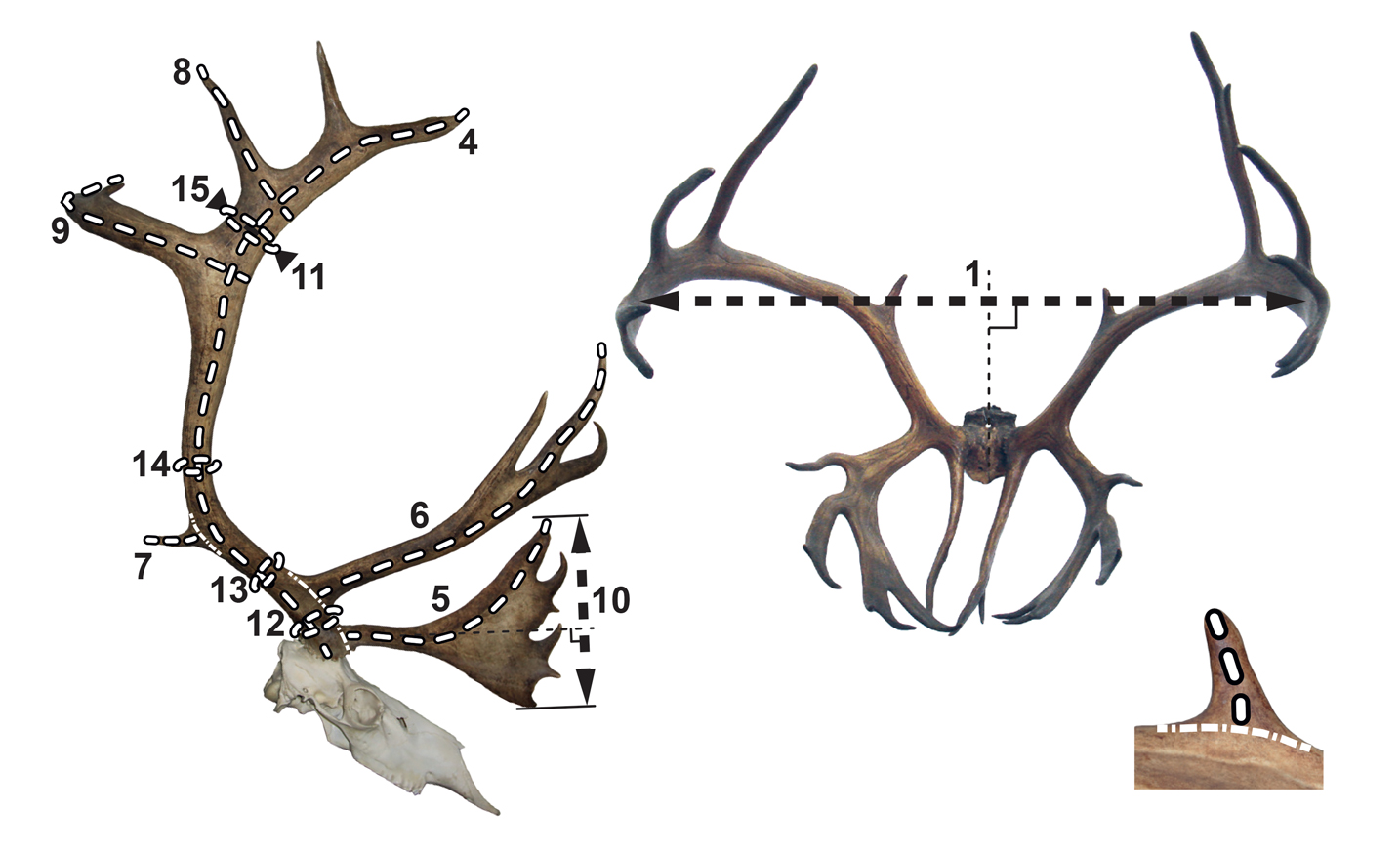Eurasian Reindeer
(Rangifer tarandus)
The Trophy
Basically, it should be noted that the variability in the formation of antlers of Rangifer Tarandus can be extremely diverse. Adult male caribou and reindeer usually have an antler morphometry with 5 main characteristics
The two antler beams show a growth formation that starts at the pedicle and leads to the outside and backwards and then ends in a forward bend to the tip of the beam. The tines in the lower third of the tines grow forwards, often in the form of a palm. The middle third often has a tine facing the rear, while in the upper third of the beam, the tines are oriented upwards. In the upper area, it comes develops into a palm formation.
The lowest brow palm/tine F-1, nearly at right angles to the front, can either be forked or not forked, but it also often has many tines and is palm-like. This brow palm frequently only occurs on a beam, while on the other beams, a simple tine of a different length will be formed.
The bay palm/tine F-2 that immediately branches off on the brow palm/tine to the front of the main beam, is also often forked or has several tines and can be palm-like.
The F-3 rear tine is generally not a forked tine, growing from the middle part of the main beam to the rear.
In the upper third of the main beams, individual tines that can be single or multiple forked, can grow upwards to the front and rear. A palm-like formation in some areas or in the entire upper area can often be observed (upper tines/upper palms). Only the two longest tines are measured.
With caribou and reindeer, all projections will be evaluated as tines, as long as they are (a) at least 12.7 mm (1/2 in.) long and (b) are longer than they are wide. The length measurement must exceed the width measurement, measured at a point located at least 12.7 mm (1/2 in.) from the tip of the tines.
The detection of number of tines in caribou and reindeer can be a complex process that requires special attention, since many tines, especially on the brow and bay palms are quite short and also bend inwards. The length of a tine is determined on the outer bend of the same, while the width is measured at right angles to the centre line of the longitudinal measurement.
Important: In terms of the number of tines (measuring parameter 2 & 3) (cm), conversions of measurement results between the metric units (cm) and inches (′′) should not be divided by 2.54 or multiplied by 0.394. I.e., a value of "20" points/tines calculated in the metric system, is simply “20" points/tines in the imperial system and vice versa.
Trophy Points Required
|
Phenotype |
Bronze |
Silver |
Gold |
|
Eurasian Reindeer |
|
|
|
|
Siberian Reindeer |
|
|
|
|
Novaya Zemlya Reindeer |
|
|
|
|
European Forest Reindeer |
|
|
|
|
Altai Forest Reindeer |
|
|
|
|
Kamchatka-Okhotsk Reindeer |
|
|
|
|
Spitsbergen Reindeer |
|
|
|
Copyright © 2023 CIC UKTEB. All content, imagery and rights belong to the International Council for Game & Wildlife Conservation United Kingdom Trophy Evaluation Board (CIC UKTEB)

